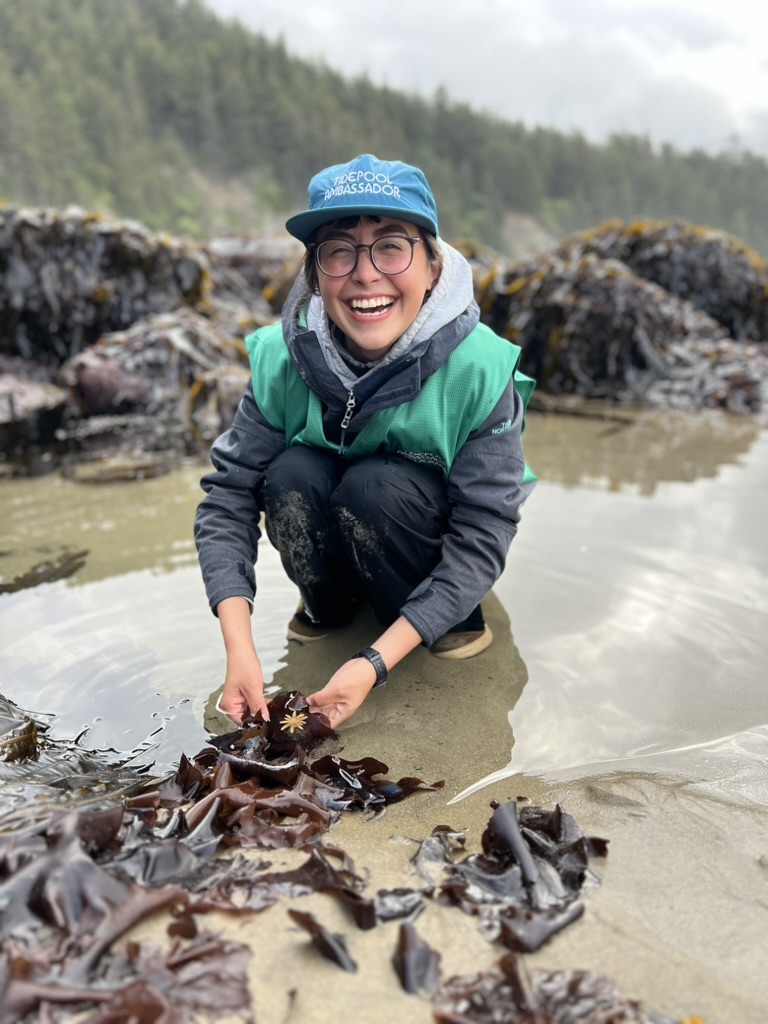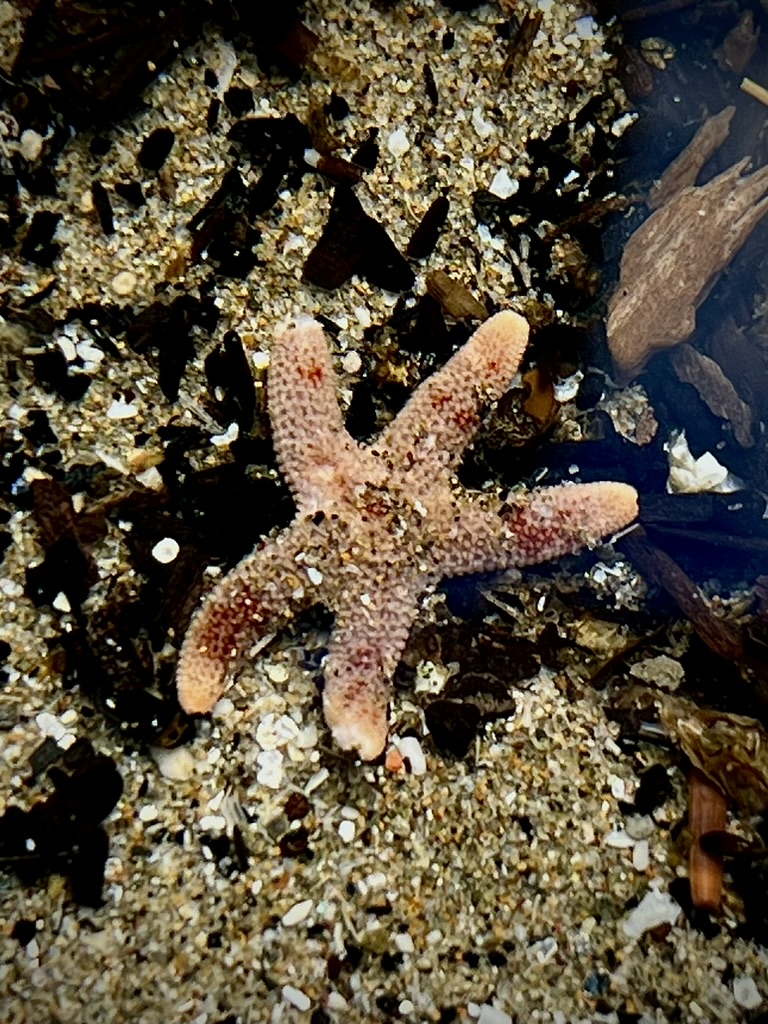Exciting news from Cape Falcon Marine Reserve: The sighting of sunflower sea stars!
This may not seem like a monumental occurrence, except there has been widespread concern about sunflower sea stars going extinct because of Sea Star Wasting Syndrome (SSWS). The disease—first observed in the Pacific Ocean on the west coast of North America in 2013—impacted approximately 20 species of sea stars from Mexico to Alaska. The rapid progression of SSWS and far-reaching geographic presence made it different from other mass-mortality events in the sea star population.

The ‘Many Legged’ Sea Star
The loss of sunflower sea stars would be significant, as they are keystone species in the intertidal and subtidal zones—sort of the “great white sharks” of the tidepools, NCLC Marine Program Coordinator Angela Whitlock says.
Their scientific name is Pycnopodia helianthodes; pycnopodia translates to densely or many footed, or legged. They can grow to be up to 3 feet across, from arm tip to arm tip, and weigh up to 13.5 pounds.
Most notably, sunflower sea stars prey upon purple sea urchins, who—when left unchecked—can mow down ecologically important kelp forests, which are more developed on the southern and central regions of the Oregon Coast than up here.
“The sunflower sea stars super important predators,” Angela says, adding the recent sightings of them are a good sign.
The first took place in April, during a SCUBA survey performed by researchers from the Oregon Department of Fish and Wildlife. They spotted two adult sunflower sea stars in Cape Falcon Marine Reserve.
Then, in late June, NCLC’s Land and Sea Stewardship Assistant Mylasia Miklas saw a juvenile sunflower sea star while working on the Tidepool Ambassador Program (TAP) at the marine reserve site.
Meanwhile, Taylor Brooks, program coordinator for the Friends of Otter Rock Marine Reserve, observed seven sunflower sea stars while tidepooling recreationally this summer. One of them was as big as her hand!
All of these sightings give the indication that “something good is happening,” Angela says.
Sea Star Surveys at CFMR Enter Third Season
NCLC’s Marine Program also has started up its third season of sea star surveys at Short Sand Beach, adjacent to Cape Falcon Marine Reserve.
The sea star surveys—conducted in partnership with the Multi-Agency Rocky Intertidal Network (MARINe)—are used to help monitor the health of sea star populations on the west coast of North America. More specifically, the data gathered from these surveys enables the MARINe collective to assess the long-term, broad-scale impact of SSWS.
The season kicked off with a training on June 7, led by Angela, who has received training from the Oregon Shores Conservation Coalition in the past. The coalition trains groups up and down the Oregon Coast on community science projects such as this.
Volunteers will now conduct surveys at the site once per month during the summer. The next survey session is set to take place in July.
The data that so far has been collected at Cape Falcon Marine Reserve is already providing important insights. According to Angela, we’re seeing a lot of juvenile recruitment and healthy stars, and SSWS seems to be waning in intensity.
“I’m not seeing as much of the severe disease as I used to,” she says.
Additionally, we’re seeing a nice diversity of sea stars: ochre, mottled, and, now, sunflower.
“Seeing more species of sea stars is encouraging,” Angela says, adding it demonstrates why having marine reserves, or protected environments, “is so important.”


Volunteers are a crucial piece of the puzzle as well. Nearly 20 people attended the training, and even if they aren’t able to commit to surveys for the summer season, Angela says, “it was an informative way to learn about the sea star disease and how data is collected.”
And there is still opportunity for individuals to participate or to contribute to community science related to sea stars. If people spot a sea star, of any variety, they can upload it to iNaturalist, where the information is reviewed and used by many different agencies.
Comments